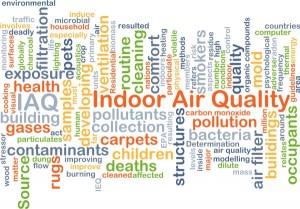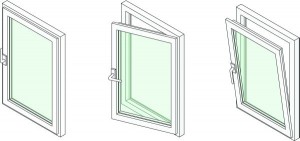Indoor Air Quality And Its Significance At Home
Aug 07, 2015 By Fenesta

Breathe Fresh and Live Healthy
Indoor Air Quality (IAQ) refers to air quality within and around the buildings and structures. It affects the health and comfort of the occupants due to varied harmful elements such as carbon monoxide, radon, lead, asbestos, rodents, dust and molds, etc.
Air Quality at Home
Just like the external atmosphere, your home is also prone to poor air quality. Here are some telltale signs that indicate degradation of indoor air quality:
1. Air does not seem to be circulating properly in the house and always smells old or stuffy 2. Condensation takes place due to indoor air humidity 3. You feel sick due to irregular odor in the air or spot mold in your home
 Indoor air quality influences our health
Indoor air quality influences our health
Sometimes, the chemicals or materials inside the home emit gases or particulates that contaminate the air inside your home. In addition, poor ventilation and circulation do not allow contaminants to flow out. Here are some sources of indoor air pollutants that can corrupt your indoor air quality:
1. Pesticides, household chemicals, solvents, and cleansing products 2. Asbestos insulation, malfunctioning space heaters and poorly vented furnaces or stoves 3. Wet carpets, furniture, rugs and tobacco products, and smoke
Air Quality Index
Air Quality Index provides you the latest information of air pollution levels in your surrounding area. It is a scale that measures the quality and levels of pollutants in the air that adversely affect human health and the environment.
Some of the common diseases caused by extreme conditions or continuous exposure to degraded air quality are: 1. Respiratory diseases like asthma 2. Cardiopulmonary diseases 3. Lung cancer 4. Stroke 5. Heart disease

Polluted Air Around Window
In order to avoid these adverse health effects, we can take some simple precautionary steps by replacing our conventional windows with dust-proof windows for a healthy home atmosphere.
A wide range of dust-proof windows is available in the market such as slider windows, casement windows and bay or tilt-and-turn windows that provide enhanced protection from tiny harmful particles and insects.
 Casement window in three different positions: closed, tilted open for ventilation, and swung fully open
Casement window in three different positions: closed, tilted open for ventilation, and swung fully open
The properties of these specially crafted windows are:
1. Filter Screen - It features a double structure made of a high-density polyester mesh and an insect mesh for excellent filtration and light permeability. It allows fresh air to enter while limiting insects, pollen, dust and debris.
2. EDPM Gaskets - This EDPM rubber acts as a gasket seal against atmospheric elements and ensures there are no gaps between the jamb, sill and sashes.
3. Fusion-Welded Frames - Fusion-welded frames are potently impenetrable to moisture; the firm corners with permanent welds results in airtight and waterproof seals.
4. Multipoint Locking System - This multipoint system creates perfect locking at several positions and ensures no gap remains between the hinged and outer frames.
5. Silicon sealant - It is a powerful and flexible adhesive used to fill out the gaps between window/door unit and the wall to prevent draughts.
Installing windows in cross direction or constructing operable skylights ensures proper ventilation. Cross-ventilation is a type of natural ventilation that is crucial for enhancing air quality.
While replacing windows, ensure to check for quality specifications. Windows are the primary opening for fresh air at home. However, air is a mixture of harmful and salubrious components. To prevent the ingress of harmful elements and maintain the indoor air quality, replacing the conventional windows with specially crafted windows is a safe and budget-wise solution.










Comments